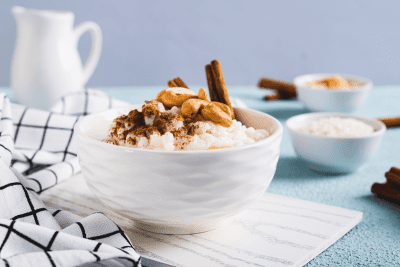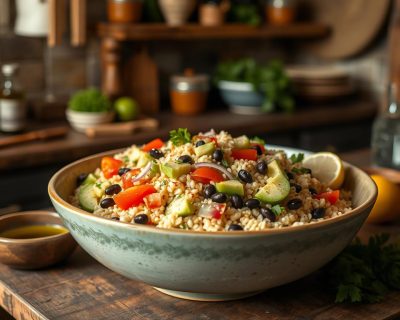Serrano Pepper vs. Jalapeño: The Mexican Showdown of Two Peppers
Discover the spicy showdown between serrano and jalapeño peppers! Explore their heat levels, flavors, and uses in Mexican cuisine to elevate your dishes.
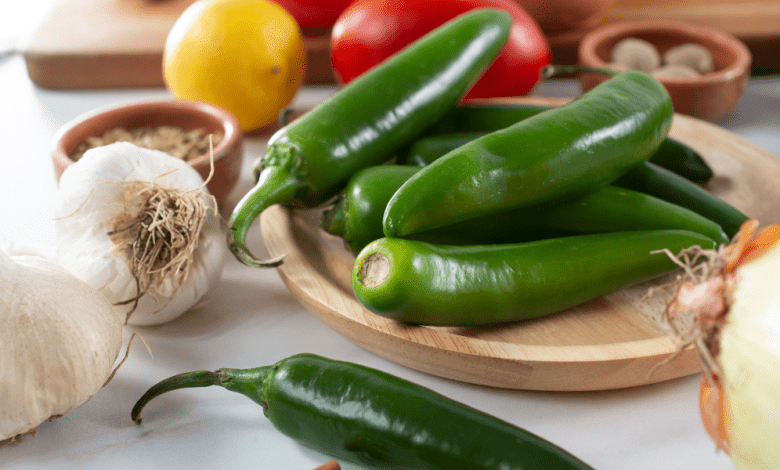
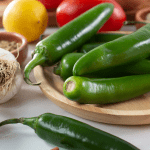
Serrano Pepper vs. Jalapeno: Discover the Hot Pepper Showdown
Let’s set the stage with a quick story. Picture this: you’re at a bustling farmers’ market, weaving through vibrant stalls overflowing with fresh produce. You stop at a table lined with peppers in every shape and size. You’re deciding between serrano peppers and jalapeno peppers for tonight’s salsa. But which one should you pick? This is a common dilemma for anyone who loves a little kick in their dishes. Let’s delve into the spicy showdown between serrano peppers and these chilies, exploring their differences and discovering how they can bring heat and zest to your kitchen.

What Makes Serrano Pepper Different from Jalapeno Peppers?
Are Serrano Peppers Hotter Than Jalapenos?
Serrano peppers are known for packing a punch regarding heat intensity. With a Scoville rating ranging from 10,000 to 23,000, these peppers are generally hotter, which sit between 2,500 and 8,000 on the Scoville scale. Most heat in both peppers comes from their capsaicin content, concentrated in their ribs and seeds. Serrano might be your better choice if you’re looking for a chili that adds a noticeable kick. Are these chilies hot? Their heat consistently delivers a fiery punch, especially when using serrano and jalapeño peppers.
Learn more about Scoville heat levels in chili peppers.

Serrano vs. Jalapeno: Flavor and Spice
Regarding taste, serranos have a bright, grassy flavor and slightly citrusy profile, making them perfect for fresh sauces and Mexican dishes, where the majority of the heat comes from the serrano pepper. On the other hand, Jalapenos are milder and often described as having a slightly smoky, earthy essence.
At the same time, serrano peppers are hotter than jalapeños and add a fiery kick to dishes. Their thicker walls give them a crunchy texture, making them great for stuffing or grilling. Serranos, which are skinnier and often chosen for their vibrant essence, are ideal for enhancing dishes without overpowering the palate. Thin slices of serrano add a perfect touch to salads and garnishes. When debating serrano vs. jalapeno, the choice often depends on the desired heat and taste profile.
Try this authentic recipe for chile relleno to explore the use of peppers in traditional dishes.
Differences Between These Popular Peppers
| Feature | Serrano Chili | Jalapeno Pepper |
|---|---|---|
| Heat Level | 10,000-23,000 Scoville units | 2,500-8,000 Scoville units |
| Size | Serrano peppers are generally smaller (1 to 4 inches) | Up to 4 inches in length |
| Taste | Bright, grassy, and citrusy | Smoky and earthy |
| Texture | Thinner walls, ideal for sauces | Thicker walls, great for grilling |
| Usage | Raw applications like fresh salsas | Stuffed or preserved preparations |
Exploring the Heat Level of These Two Peppers
Comparing Scoville Heat
The Scoville scale measures the spicy flavor of chili peppers like serranos and jalapenos. Serrano Scoville ratings are approximately two to three times higher than jalapenos, making them a preferred choice for those who crave a spicier kick. However, removing the seeds and ribs, which house most capsaicin, can moderate their heat. Understanding the Scoville difference can help you customize recipes effectively if you’re experimenting in the kitchen.
Can You Handle the Heat?
Not everyone can handle the intensity of serranos. If you’re sensitive to spicy foods, consider starting with jalapenos and working up to serranos as your palate adapts. These peppers offer a perfect way to explore the heat spectrum without diving straight into extremely hot varieties like habaneros. Always wash your hands thoroughly after handling any chili to avoid irritation.
Spice up your meals with Camarones a la Diabla, a fiery shrimp dish.
Frequently Asked Questions About Serrano and Jalapeno Peppers
Where Can I Find Serrano and Jalapeno Peppers?
You can easily find serrano and jalapeno peppers in most grocery stores and supermarkets, particularly in the produce section. These peppers are commonly displayed alongside other fresh ingredients, making choosing the best quality for your recipes easy.
How Do Serrano Peppers Deliver Heat in Recipes?
Serrano peppers are usually chosen for their ability to deliver balanced heat without overwhelming a dish. Their thin walls allow the flavor to infuse dishes quickly, making them a favorite for marinades and fresh salsas.
Do Serrano Peppers Ripen Like Other Chili Varieties?
Serrano peppers ripen over time, transitioning from a vibrant green to orange or red as they mature. A ripe serrano looks appealing and carries a slightly sweeter and richer taste, making it perfect for diverse recipes.
Check out this Rosca de Reyes recipe. To pair sweet bread with spicy dishes, consider using jalapeño and serrano peppers for the desired spiciness.
How Do Serranos Compare to Other Varieties?
When considering the pepper ranks on the Scoville scale, serranos sit between jalapenos and hotter varieties like cayenne or habanero. They’re ideal for cooks who want to explore spiciness without going too extreme.

Are These Peppers Commonly Used in Mexican Cuisine?
Absolutely! Both jalapeno and serrano peppers are staples in Mexican cooking, often found in salsas, stews, and marinades. Serranos, in particular, are widely used in Mexican street food to add a fresh, fiery punch.
The Culinary Uses of Serrano and Jalapeno Peppers
Adding Heat to a Dish
Both serranos and jalapenos are staples in Mexican cuisine, used to enhance salsas, soups, and marinades. Serranos are particularly favored for their ability to deliver kick and flavor balance, making them an essential ingredient for chefs who want their dishes to pack a punch without overwhelming other flavors. Jalapenos are great for milder, balanced heat.
Discover how to make Green Chilaquiles A classic Mexican breakfast featuring chili peppers often includes serrano and jalapeño peppers.
Popular Dishes
- Salsas: Serranos star in fresh, zesty sauces like pico de gallo or avocado-based dips. Their natural heat beautifully complements creamy ingredients like avocado. With their smoky undertones, Jalapenos are ideal for roasted or grilled sauces. Serranos are also commonly used in guacamole to give it an extra layer of spice.
- Dishes: Use serranos in soups or stews for a vibrant, spicy punch. Jalapenos work well in stuffed dishes like poppers.
Try making authentic gorditas to enjoy alongside spicy salsas.
Preparation Methods
| Preparation Method | Serrano Chili | Jalapeno Pepper |
| Grilled | Enhances smoky depth | Excellent for stuffed grilling |
| Pickled | Retains bright and zesty flavor | Balances acidity and mild heat |
| Roasted | Develops deeper, caramelized notes | Adds a slightly charred complexity |
Serranos can be grilled, brined, or roasted to enhance their profile. Their thinner walls make them ideal for roasting, as they develop a rich depth while maintaining their signature heat. Serranos deliver a bold yet tangy addition to tacos, salads, or side dishes when brined. Thin slices of serrano peppers also work perfectly as garnishes for vibrant dishes.
The Health Benefits of Serrano Pepper vs. Jalapeno
Boosting Health with Peppers
Both chilies are rich in vitamins A and C and capsaicin, which may help boost metabolism and support heart health. Capsaicin may also play a role in reducing inflammation and managing chronic diseases when consumed in moderation. Including serranos in your diet can add dietary fiber, enhancing digestion and overall well-being. Peppers can also help regulate cholesterol levels, making them a heart-friendly meal addition.
Nutritional Value
Serranos are lower in calories and higher in dietary fiber than jalapenos, making them a great addition to a balanced diet. Both peppers are excellent sources of antioxidants that support overall health. With Serranos, you get a combination of bold taste and essential nutrients.
Avoiding Risks
For those sensitive to spicy foods, consuming serrano or jalapeño peppers can cause discomfort, including a burning sensation or upset stomach. Moderation is key to enjoying these peppers without adverse effects.
Balance your meals with Arroz con Leche, a creamy dessert complementing spicy dishes.

Choosing the Best Peppers
Selecting Fresh Peppers
When exploring grocery stores or supermarkets, look for serranos that still pack firmness and vibrant green color. These peppers are carefully harvested to maintain freshness. Avoid any peppers that appear wrinkled or have dull skins. Fresh peppers retain their crunch and are ideal for preparing flavorful meals.
Tips for Preparing Serrano Pepper
To cut peppers precisely, use a sharp knife and scrape out the seeds and ribs for a milder spice. This technique works well for both serrano and jalapeño peppers, allowing you to control the heat level in your dishes, whether you prefer mild or hot.
Key Takeaways
- Heat Difference: Serrano chilies are significantly hotter than jalapenos.
- Taste Profiles: Serranos are grassy and citrusy, while jalapeños are smoky and earthy, highlighting the differences between these popular chili peppers.
- Culinary Uses: Serranos excel in raw applications, while jalapenos shine when grilled or stuffed.
- Health Benefits: Both peppers are nutrient-rich but should be consumed in moderation. Including serranos can enhance your diet with their fiber and capsaicin content.
Frequently Asked Questions about Serrano Pepper
❓ Is serrano pepper spicy?
Yes! This chili is known for its heat, ranking between 10,000-23,000 Scoville Heat Units (SHU), making it spicier than a jalapeño but milder than a habanero.
❓ How spicy is a serrano pepper?
It is about 3 to 5 times hotter than a jalapeño, with a crisp, fresh flavor that enhances salsas, sauces, and spicy dishes.
❓ What is a serrano pepper?
This small, slender chili originates from Mexico and is widely used in Mexican and Latin American cuisine for its bold spice and vibrant taste.
❓ Which is hotter, jalapeño or serrano pepper?
The serrano is significantly hotter than a jalapeño. While jalapeños average 2,500-8,000 SHU, serranos range from 10,000-23,000 SHU.
❓ How big is a serrano pepper?
They are typically 1 to 4 inches long and about ½ inch in diameter, with a firm texture and thin skin that doesn’t require peeling.
❓ How to get serrano pepper off hands?
Wash your hands with oil, dish soap, or a paste of baking soda and water before rinsing with cold water to remove capsaicin oils.
❓ Is a serrano pepper a jalapeño?
No, they are different chili varieties. Serranos are smaller, spicier, and have a thinner skin compared to jalapeños.
❓ Can you eat serrano pepper seeds?
Yes, the seeds are edible and contain heat. Removing them can slightly reduce spiciness, but they add an extra kick to recipes.
© 2025 Serrano Pepper
Conclusion
The serrano chili and jalapeno each bring unique profiles, spice levels, and culinary versatility, with serranos usually hotter than jalapeños. Whether you’re making fresh salsa, grilling up some spicy treats, or exploring the health benefits of chili peppers, choosing between these two comes down to your preference and desired kick. So next time you’re at the market, grab a few serranos or jalapeños and experiment with the dynamic duo of jalapeño and serrano peppers in your dishes. Your taste buds will thank you.
For more inspiration, try these Chicken Flautas, perfect for your favorite salsas.
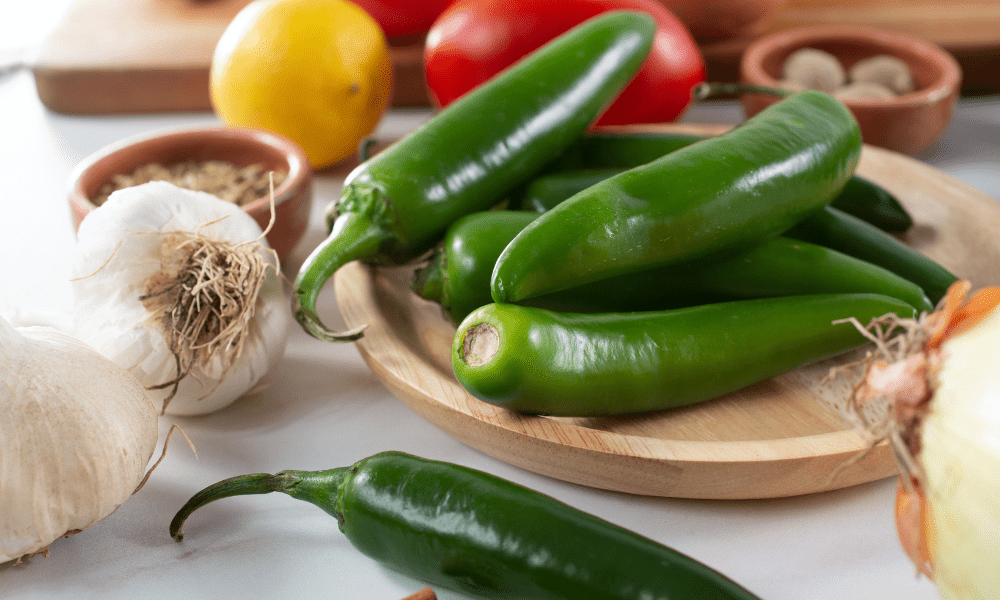
Spicy Pickled Jalapeños and Serrano Peppers Recipe 🌶️
Equipment
- Large saucepan
- Medium glass jar(s) with airtight lids
- Cutting board
- Sharp knife
- Measuring cups and spoons
- Slotted spoon
Ingredients
- 6 jalapeño peppers sliced into rings
- 4 serrano peppers sliced into rings
- ½ medium carrot sliced into thin rounds
- ½ medium white onion thinly sliced
- 3 garlic cloves peeled and smashed
- 1 cup white vinegar or apple cider vinegar for a slightly sweeter taste
- 1 cup water
- 1 teaspoon salt
- 1 teaspoon sugar optional, balances acidity
- 1 teaspoon dried oregano Mexican oregano preferred
- ½ teaspoon black peppercorns
- ½ teaspoon mustard seeds optional, adds depth
- 1 bay leaf
- 2 tablespoons olive oil
Instructions
- Step 1: Prepare the Peppers and Vegetables
- Wash and slice the jalapeños and serrano peppers into rings (or leave them whole if preferred for a milder taste).
- Slice the carrots and onions into thin rounds.
- Peel and smash the garlic cloves slightly to release their flavor.
- Step 2: Sauté the Vegetables
- Heat 2 tablespoons of olive oil in a large saucepan over medium heat.
- Add the garlic, onions, and carrots, sautéing for 2–3 minutes until fragrant.
- Stir in the sliced jalapeños and serranos, cooking for another 1–2 minutes to slightly soften.
- Step 3: Make the Pickling Brine
- Add vinegar, water, salt, sugar, oregano, black peppercorns, mustard seeds (if using), and the bay leaf to the saucepan.
- Bring to a gentle boil, then reduce heat and simmer for 5 minutes.
- Step 4: Transfer to Jars
- Use a slotted spoon to transfer the vegetables into clean glass jars.
- Pour the hot pickling brine over the peppers, making sure everything is submerged.
- Let cool at room temperature for 1 hour before sealing with a lid.
- Step 5: Store and Serve
- Refrigerate for at least 24 hours before eating for the best flavor.
- Pickled jalapeños and serranos will keep in the fridge for up to 2 months.
- Serve with tacos, tortas, burgers, nachos, or any Mexican dish for a spicy kick!
Video
Notes
✔️ Spicier Version: Increase the serrano pepper quantity or add 1 dried chile de árbol.
✔️ Sweet & Spicy: Add 1 tablespoon honey or brown sugar for a slightly sweet balance.
✔️ Extra Crunchy Peppers: If you prefer a crisp texture, reduce the simmering time by 2–3 minutes.
✔️ Apple Cider Vinegar Twist: Swap white vinegar for apple cider vinegar for a fruitier taste.
Nutrition
Nutrition Disclaimer
The Chef Marcy is not a dietician or nutritionist, and any nutritional information shared is an estimate. If calorie count and other nutritional values are important to you, we recommend running the ingredients through whichever online nutritional calculator you prefer. Calories can vary quite a bit depending on which brands were used.




